Exploring The Magnificence Of Emperor Akbar’s Abandoned City Of Fatehpur Sikri

Fatehpur Sikri is a city in Uttar Pradesh built by Emperor Akbar and known for its marvellous palatial structures that depict the finest artistry and craftsmanship. Known for its use of red sandstone, the city is an awe-inspiring architectural genius that oozes charisma even after so many centuries. It was declared a UNESCO World Heritage Site in 1986 and the ASI maintains and manages it. Built with a mix of Hindu, Islamic, Persian, and other architectural styles, every monument is a unique work of art completed with finesse. A feast to the eyes and soul, Fatehpur Sikri continues to enthral every visitor.
About Fatehpur Sikri
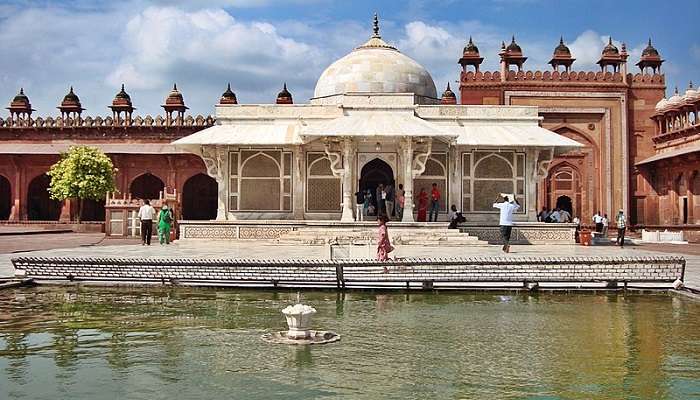
Fatehpur Sikri is the definition of luxury and perfection as every structure it houses is a masterpiece. From the grand darwazas that adorn the various pathways towards the city to the courtyards where Emperor Akbar spent his time in recreational activities, every inch of the place has an intriguing story to tell. People from all over the world travel to Fatehpur Sikri to witness the heritage and culture that are preserved in pristine condition. It is a journey to the Mughal era that you can relive and cherish long after you leave the place. It will surely be etched in your memory from the moment you step inside the city.
Timings: Sunrise to Sunset, Monday to Sunday
Entrance fee: INR 50 for Indian nationals, SAARC, and BIMSTEC Countries, INR 610 for foreigners
Full-day tour (Fatehpur Sikri, Agra Fort, Taj Mahal): INR 750 for Indian nationals, INR 3,600 for foreigners
Half-day tour (Fatehpur Sikri): INR 550 for Indian nationals, INR 1500 for foreigners
Child full-day or half-day tour (Children below 15 years): INR 550
Must Read: Places to Visit in Varanasi in 2 days
History Of Fatehpur Sikri
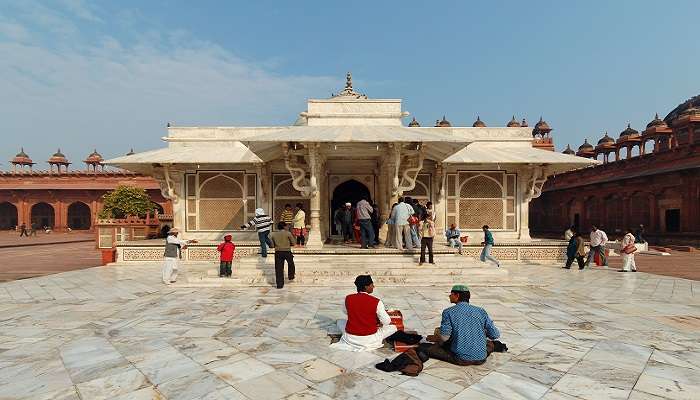
Emperor Akbar wanted an heir and sought Sheikh Salim Chishti’s help in Sikri village. The Sufi saint predicted the birth of three sons, and when Prince Salim was born, the elated emperor decided to build his empire in Sikri. He decided on a joint capital with Agra and ordered the city of Fatehpur Sikri to be built. The construction of the various monuments began in 1571 and ended in 1573. The Indo-Islamic architecture of the Mughal Era was used with expertise visible in every corner. It was planned perfectly, and historians have established that only a connoisseur could plan at this level.
The first structure to be built was the Jama Masjid, which was the brainchild of Emperor Akbar. Other buildings were built around it, including courtyards, palaces, darwazas, etc. The change in the foundation level was used to emphasize and showcase the various structures of the city. Unfortunately, the capital did not last long, as water shortage drove him to abandon the city that was supposed to be an example of finery. Even though the Mughals came for temporary visits, they never stayed for a long time. Soon after, the capital was shifted, turning the once flourishing city into a ghost city.
Major Monuments Of Fatehpur Sikri
Fatehpur Sikri has numerous monuments, palaces, courtyards, gateways, and tombs. Here are some of the city’s main structures.
1. Jami Masjid
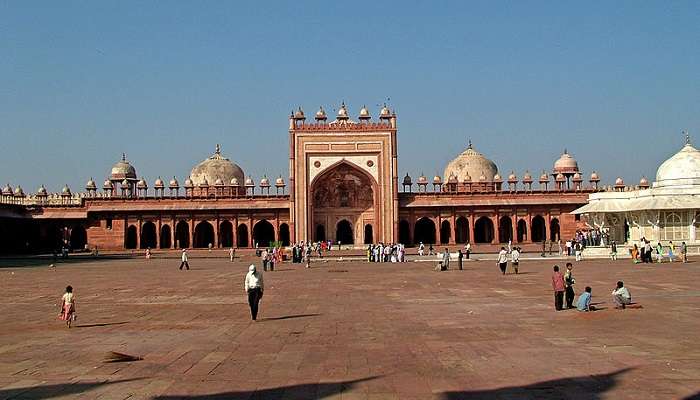
The mosque was built in 1571 AD, and it propelled the construction of the other structures in Fatehpur Sikri. It remains one of the largest mosques in the country and has a massive courtyard. You can get to the Jami Masjid from the Buland Darwaza entrance. Its breathtaking architecture will leave you in awe.
Suggested Read: Hotels Near Taj Mahal
2. Daulat Khana-I-Khas
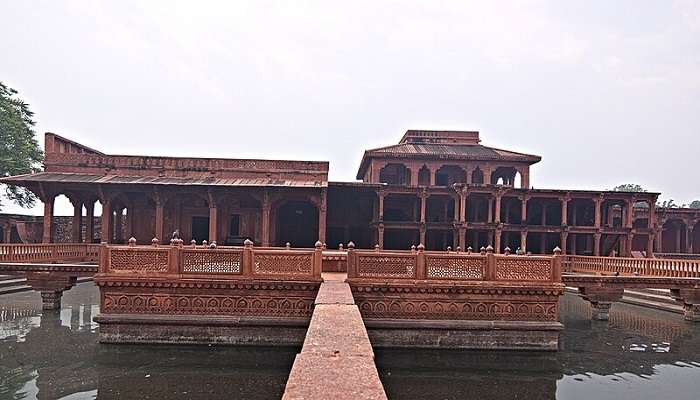
The Daulat Khana-I-Khas has two rooms; one was the resting area while the other was a library. The first floor of this building was Khwabgah, or the bed chamber of the emperor. Through corridors, it is connected to Jodha Bai’s palace, Turkish Sultana’s palace, the Panch Mahal, and Marian’s House.
3. Palace of Jodha Bai
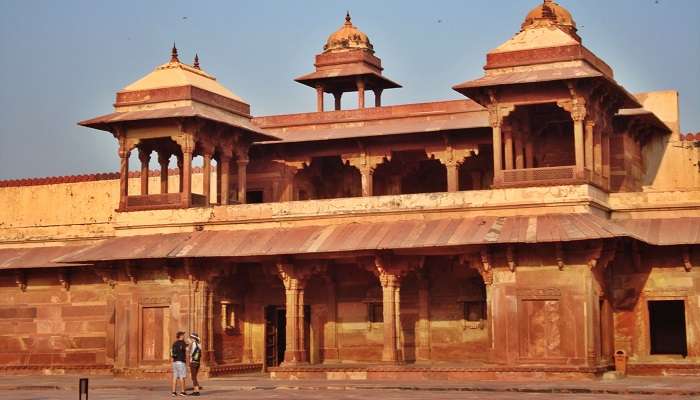
The Palace of Jodha Bai was for Emperor Akbar’s Rajput wife and is an important structure in Fatehpur Sikri. It is among the largest buildings in the complex. It perfectly depicts the blend of Muslim cupolas and Hindu columns. The palace was a highly secure place with high walls and the eastern gate used for guarding.
Suggested Read: Picnic Spots Near Agra
4. Buland Darwaza
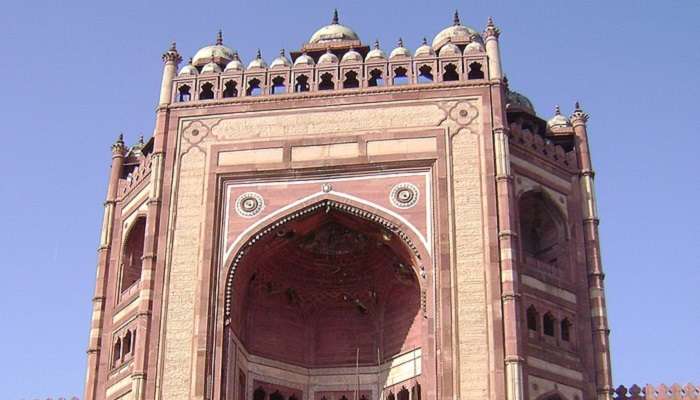
The Buland Darwaza is a grand gateway that has become one of the largest in the world. You need to walk a 13-metre flight of steps to reach it, but the excellent architecture makes it worth it. It was built in 1602 AD, when Emperor Akbar won over Deccan.
5. Panch Mahal
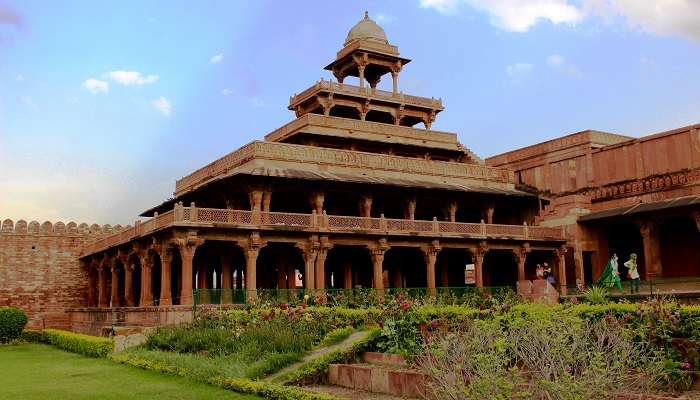
The Panch Mahal is among the most interesting structures in Fatehpur Sikri. It has five storeys that gradually decrease in size, making it appealing. It has a chhatri that adds to the old-world Mughal charm. It is believed that there are divisions in the interior so that ladies can attend court.
Suggested Read: Places to visit in Azamgarh
How To Reach Fatehpur Sikri
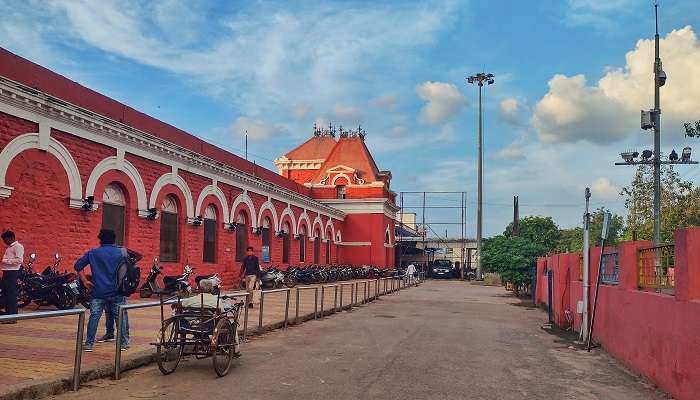
The Kheria Airport in Agra is the closest; you can hire a direct taxi from there to Fatehpur Sikri. The Agra Cantt Railway Station is the nearest, and you can hire a taxi to get to your destination. You can also travel by road as UPSRTC bus services provide frequent transport from Agra to Fatehpur Sikri. Travelling by auto and hired cab are other convenient options that enable you to take your time exploring the ghost city.
Tips For Visiting Fatehpur Sikri
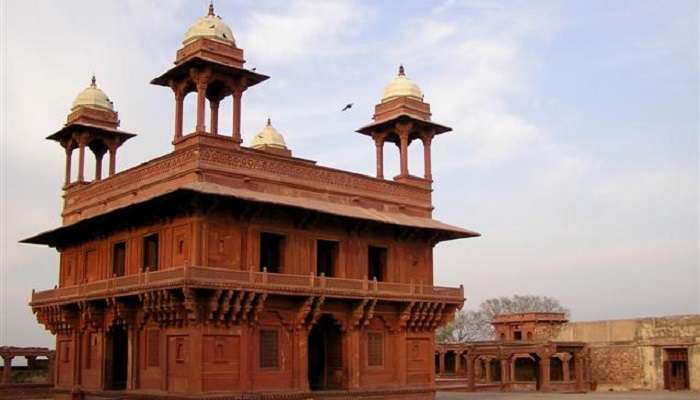
- If you want to book a daily sightseeing tour from UP Tourism, you need to have a group of 6 people or more.
- A guided tour by a licensed guide will give you new insights into the Mughal culture, so it is highly recommended that you take one.
- You cannot smoke or eat in the Fatehpur Sikri complex’s premises, so make sure you do not bring these prohibited items with you.
- You can take water with you; plenty of water-filling stations are available throughout the complex.
- Hire a guide for the specified time to understand the marvels and then revisit each site to witness the grandeur in depth.
Further Read: Places to Visit in Hastinapur
Add Fatehpur Sikri to your trip to Uttar Pradesh itinerary today! You will find some of the most captivating Mughal-era architecture and stories that will take you centuries back into the lives of the royals. If you come to Agra for the Taj Mahal, you must visit this city as splendid as the good old days!
For our editorial codes of conduct and copyright disclaimer, please click here.
Cover Image Source: Diego Delso for Wikipedia
Frequently Asked Questions About Fatehpur Sikri
Why is Fatehpur Sikri so famous?
It is among the most spectacular examples of Mughal architecture at its finest. To this day, it mesmerizes people from all walks of life due to its grandeur, opulence, and intricacy.
What does Fatehpur Sikri mean?
The name translates to ‘City of Victory.’ It was known as ‘Fatahabad’ earlier, a variation of the word ‘Fatah’ meaning victory in Persian. Akbar named it in honour of the Sufi saint Sheikh Salim Chishti.
Why is it called the ghost city?
Despite being an exemplary architectural marvel, it was abandoned by Emperor Akbar due to a shortage of water. The others left soon after, turning the city into a ghost city.
Is Fatehpur Sikri ever closed?
No, it is open from Monday to Sunday from sunrise to sunset. It is also open on public holidays so that no traveller misses the opportunity to visit the World Heritage Site.
Where is Emperor Akbar buried?
His tomb is in Sikhandra, and he was buried in a mausoleum which was built in 1613 by his son Jahangir. The architecture is reminiscent of Mughal architecture.
Who was Akbar’s favourite wife?
His favourite wife’s name was Mariam-uz-Zamani, and she was also known as Jodha Bai. Her tomb is just a kilometre away from Akbar’s tomb.
People Also Read:
Historical Places in Bhopal Gujarat’s Historical Places Historical Places in Kolkata

With a passion for exploring and travelling to the roads long forgotten, experience the world through enthralling stories and adventures. Join me as I share my experiences at some of the world’s most popular tourist destinations and quench that pestering curiosity with something exciting!











